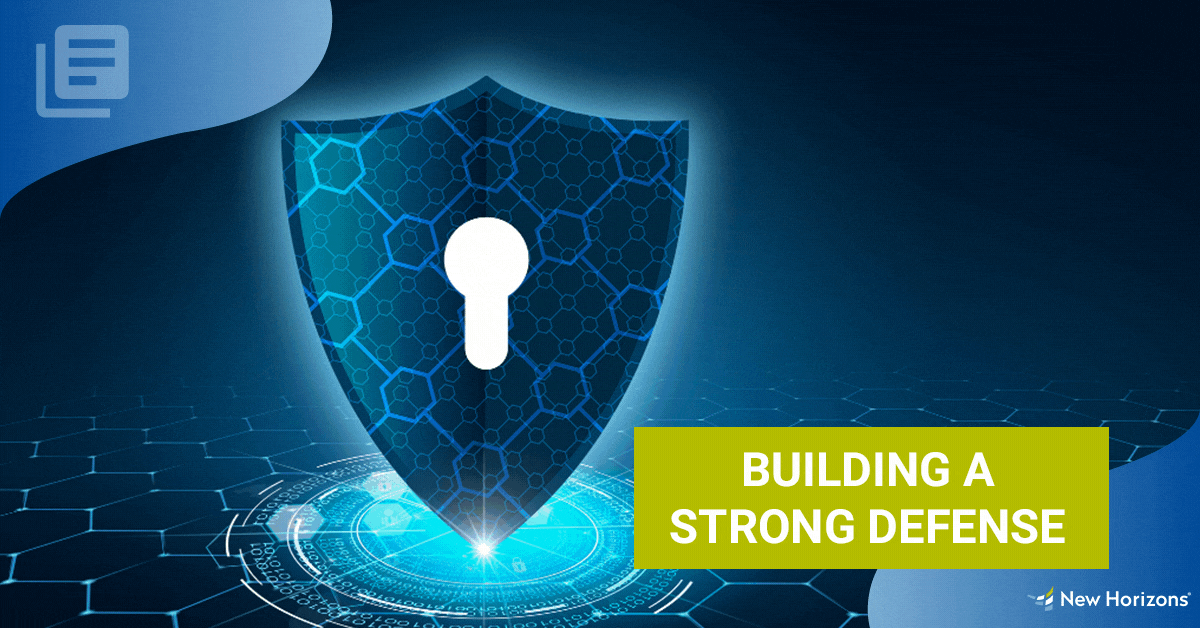
IT managers are tasked with securing their company’s sensitive information and data and the way an organization handles a cybersecurity threat can affect all departments and stakeholders, as well as impact a company’s image which is why it's integral to know how to develop a cybersecurity program. Maybe your company’s current cybersecurity plan needs improvement or maybe your organization is completely new to the concept of cybersecurity. Cybercrime is a threat all companies should prepare for, regardless of their size or industry.
Take stock of your current cybersecurity measures
You should examine any strategies that your IT department already has in place and look back on any records that have been made of these strategies any time they have been uesd. You should determine if what’s in place is updated, how costly it is, if it’s been effective, and if it’s been maintained.
You should also look at the security of the overall cyber environment at your organization. Are your coworkers trained in cybersecurity? How much money and time is available to devote to developing and implanting a cybersecurity strategy? What cyber threats and vulnerabilities is your organization currently facing?
This is also a good time to set yourself up for success by ensuring you have a sustainable way to keep notes and records as well as set goals and track your progress.
Network Monitoring
Ensure that your company’s network can effectively gather, process, and display data on all of the connected devices. Some networks are capable of triggering email alerts if a potential threat is detected.
Antivirus software is an important consideration when developing a cybersecurity plan because it can monitor daily use and identify abnormal or malicious activity.
Collaborate with multiple departments
If you’re in charge of developing and implementing your company’s cybersecurity strategy, you should be open and collaborative with others on your team as well as coworkers from other departments as all of these people may have noticed things or had ideas that you couldn’t come to on your own. It’s imperative that your cybersecurity strategy holistically protects every aspect of the company.
Similarly, if you find the general knowledge of cybersecurity is lacking on your IT team or within your company, this is an opportunity to invest in high-quality training. An educated and prepared staff is one of the best defenses against cybersecurity threats.
Setting practices and controls
Once you’ve thoroughly evaluated your company’s cybersecurity environment and made note of all possible threats and opportunities for improvement, it is time to determine the best methods to achieving a high level of cybersecurity.
Your plan should include steps for not only the prevention of cyberattacks but how to detect and respond to those attacks should they occur. Your plan should also include clear instructions that leave no room for misinterpretation as well as a chain of communication and a system for documenting incidents.
As the laws around data protection of customers continue to evolve, it’s essential to stay up to date on that legislation and make sure your cybersecurity plan is compliant in that regard.
Your plan should enforce the protection of files internally and externally, ensuring no unnecessary access to information is given to employees who don’t need it to do their jobs. A data map is a helpful tool for quickly seeing what information is being stored as well as the age of this information and how long it needs to be stored.
Consider your budget
When drafting your cybersecurity plan, it is important to consider your available budget for costs such as hardware, software, and training and be prepared to prioritize if not all of your costs fit within your budget. While antivirus software is necessary for every organization, security information management is probably optional depending on your organization’s size.
One of the most effective ways to optimize a limited budget is to invest in your employees’ cybersecurity skills and knowledge.
Developing a Cybersecurity Strategy
A well-thought-out, holistic cybersecurity strategy will not eliminate risk, but it can more clearly help your IT team to deter, detect, make you aware of a cyberattack, and can help you produce an effective, quick response. By continuously monitoring and optimizing your security, you'll be able to protect your organization and your data better. View cybersecurity training here.
Get access to our free guide on creating Your Most Comprehensive Cybersecurity Plan >>>
